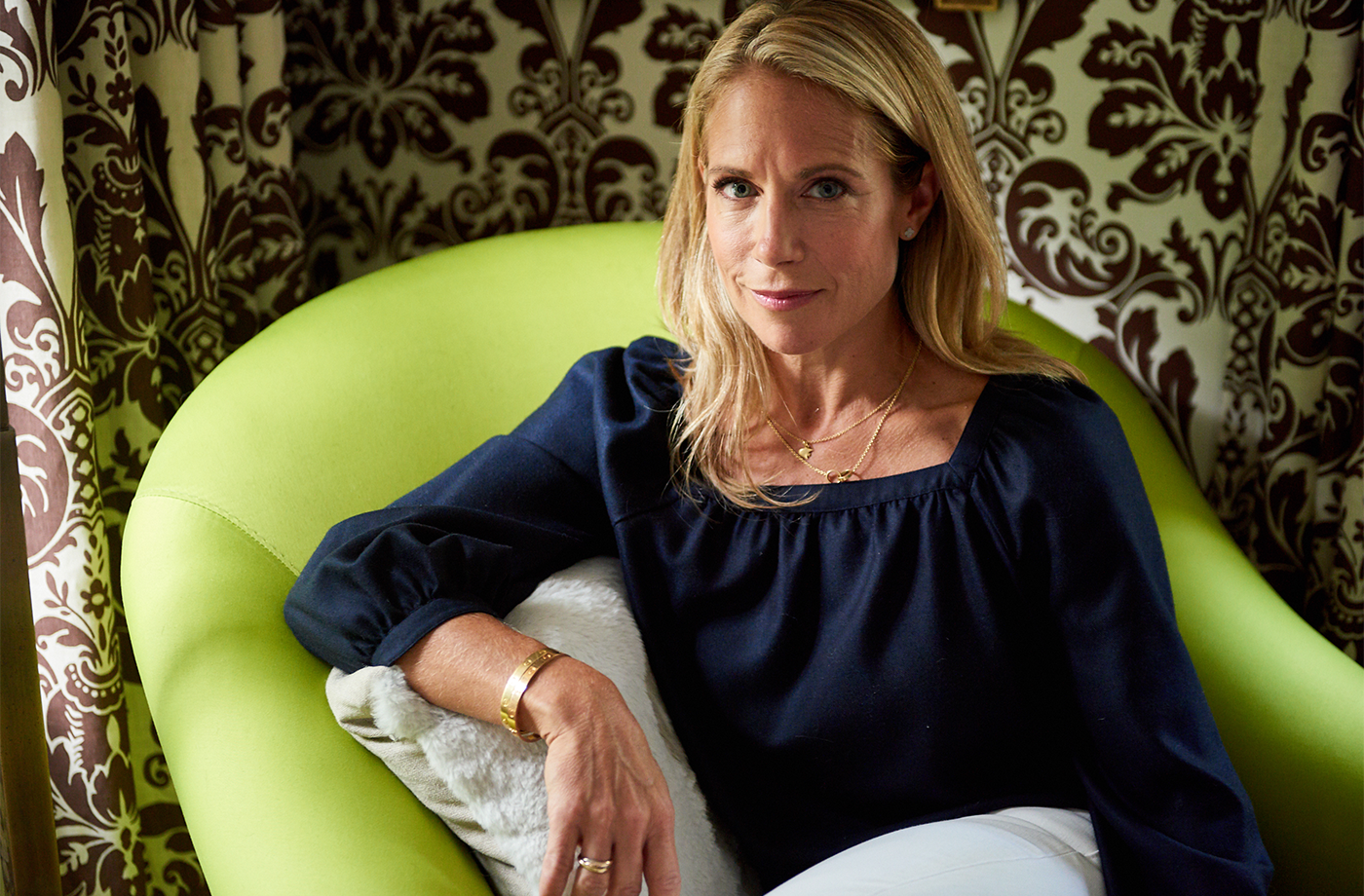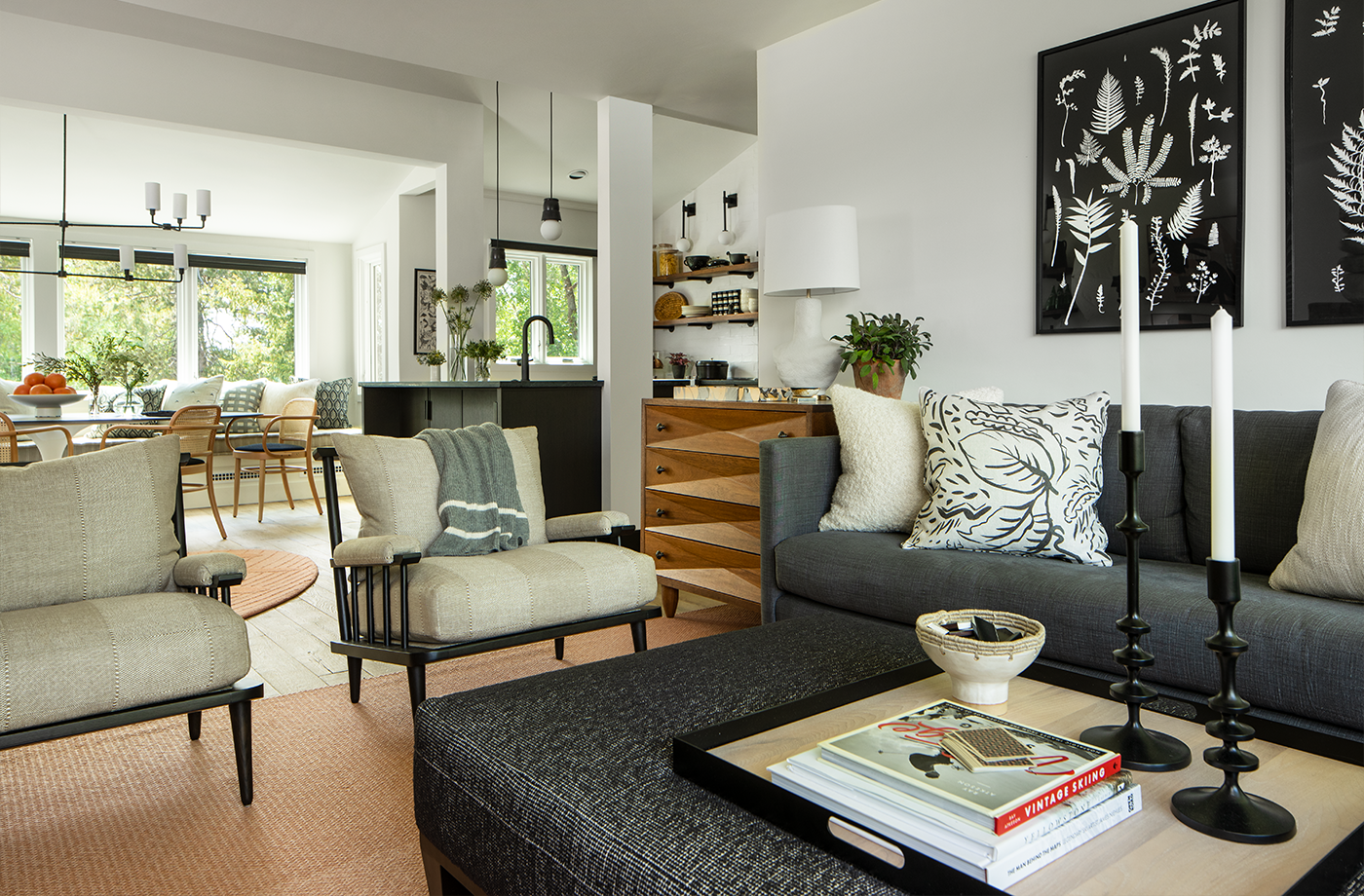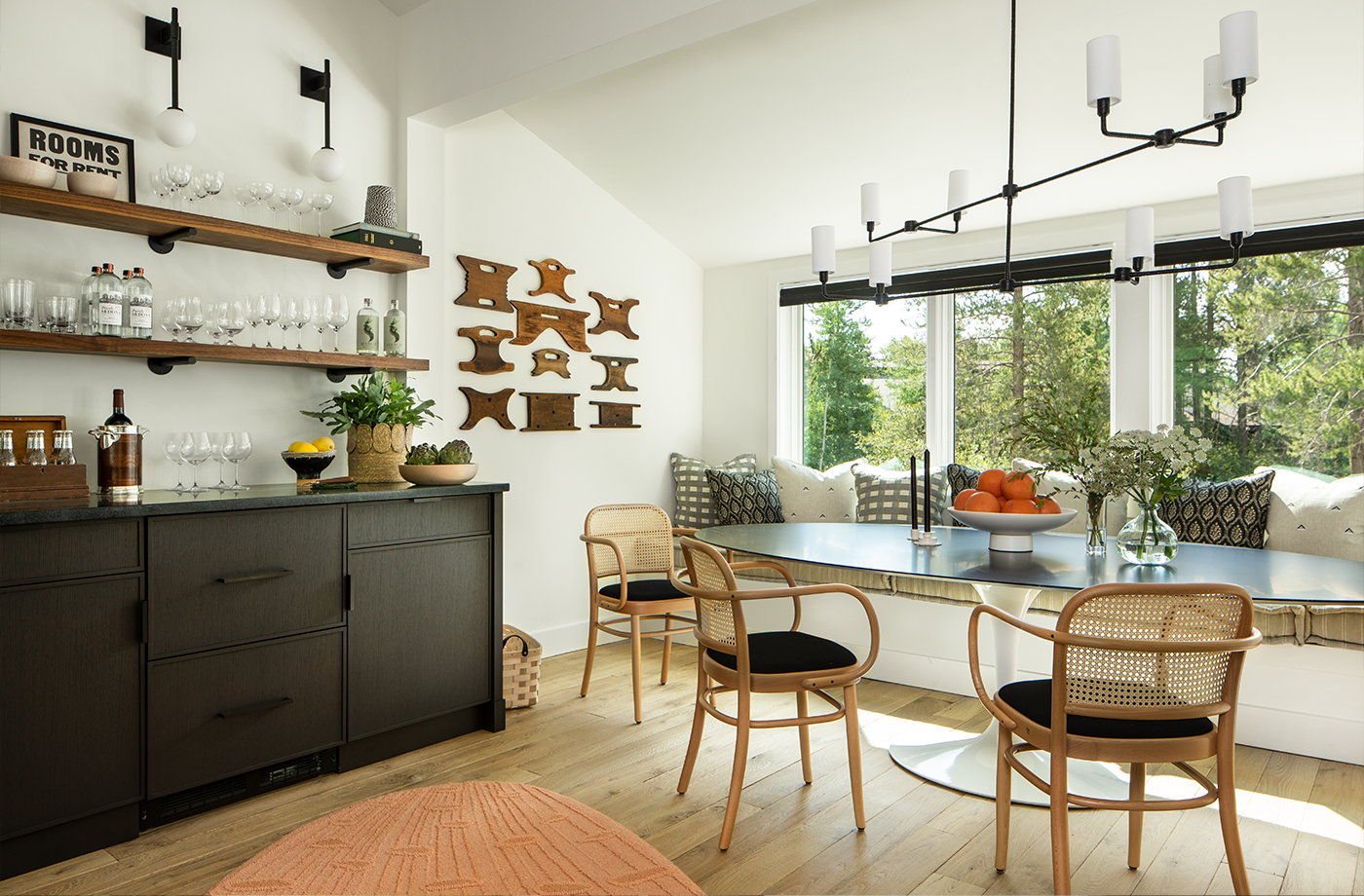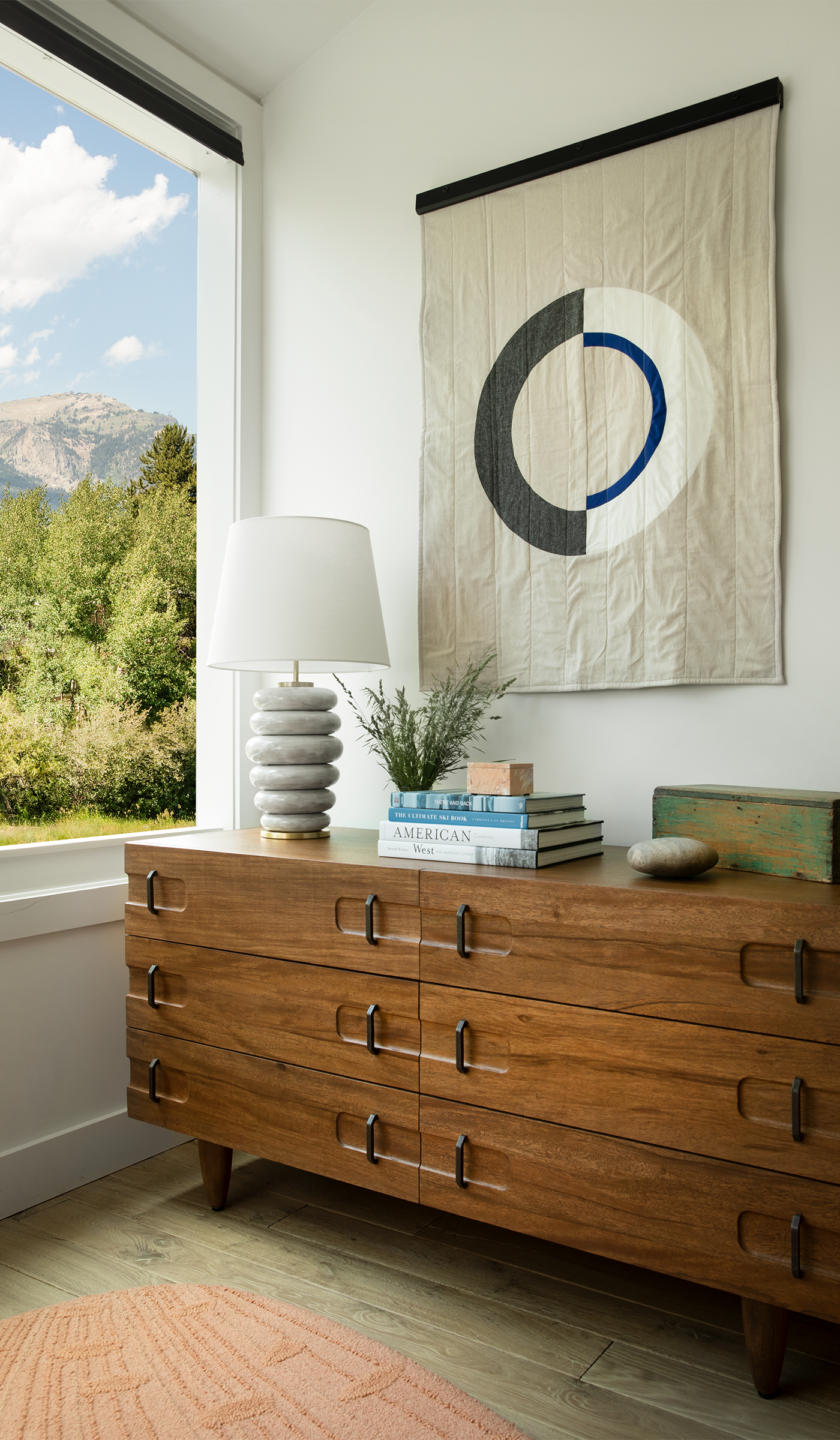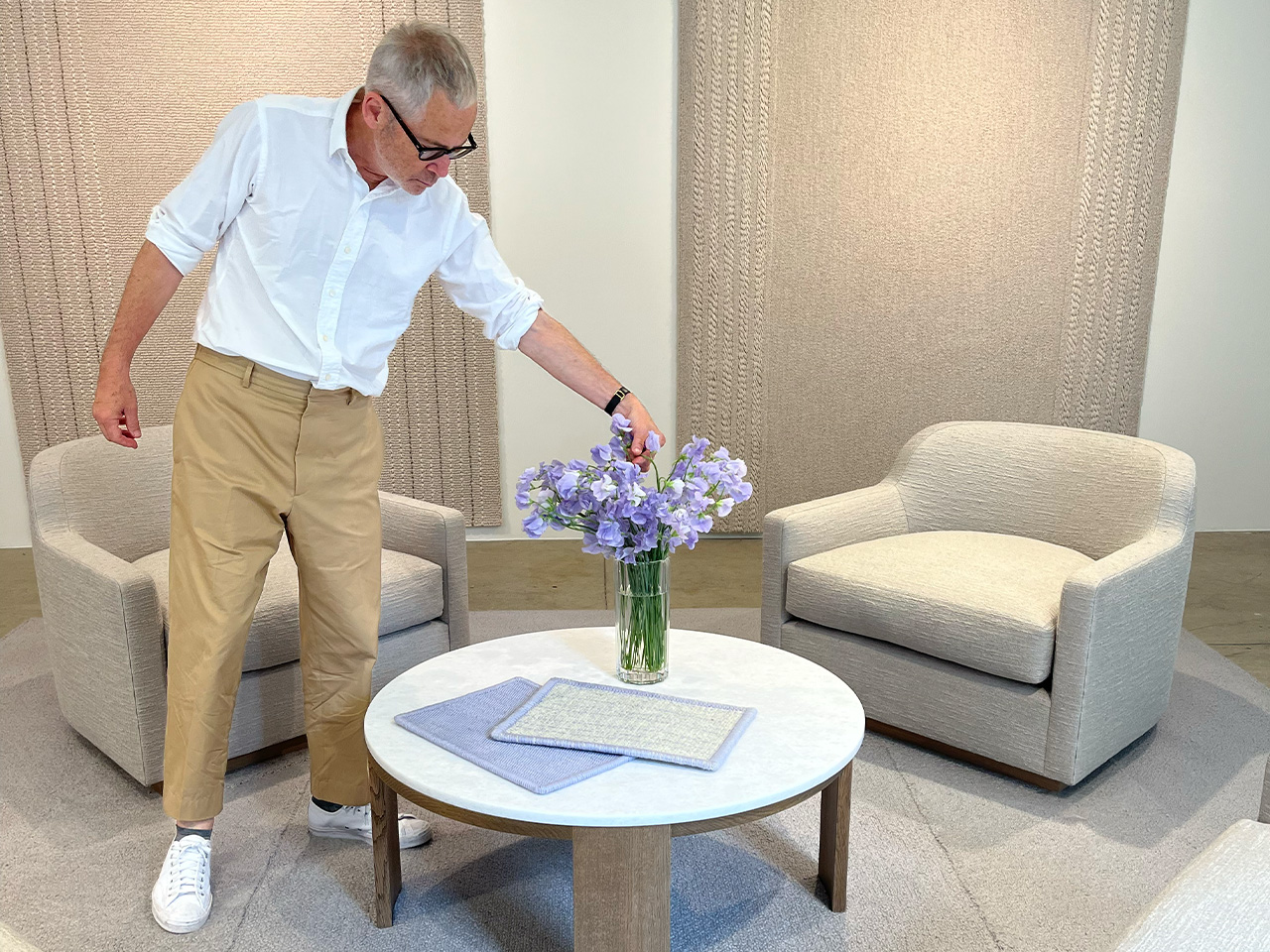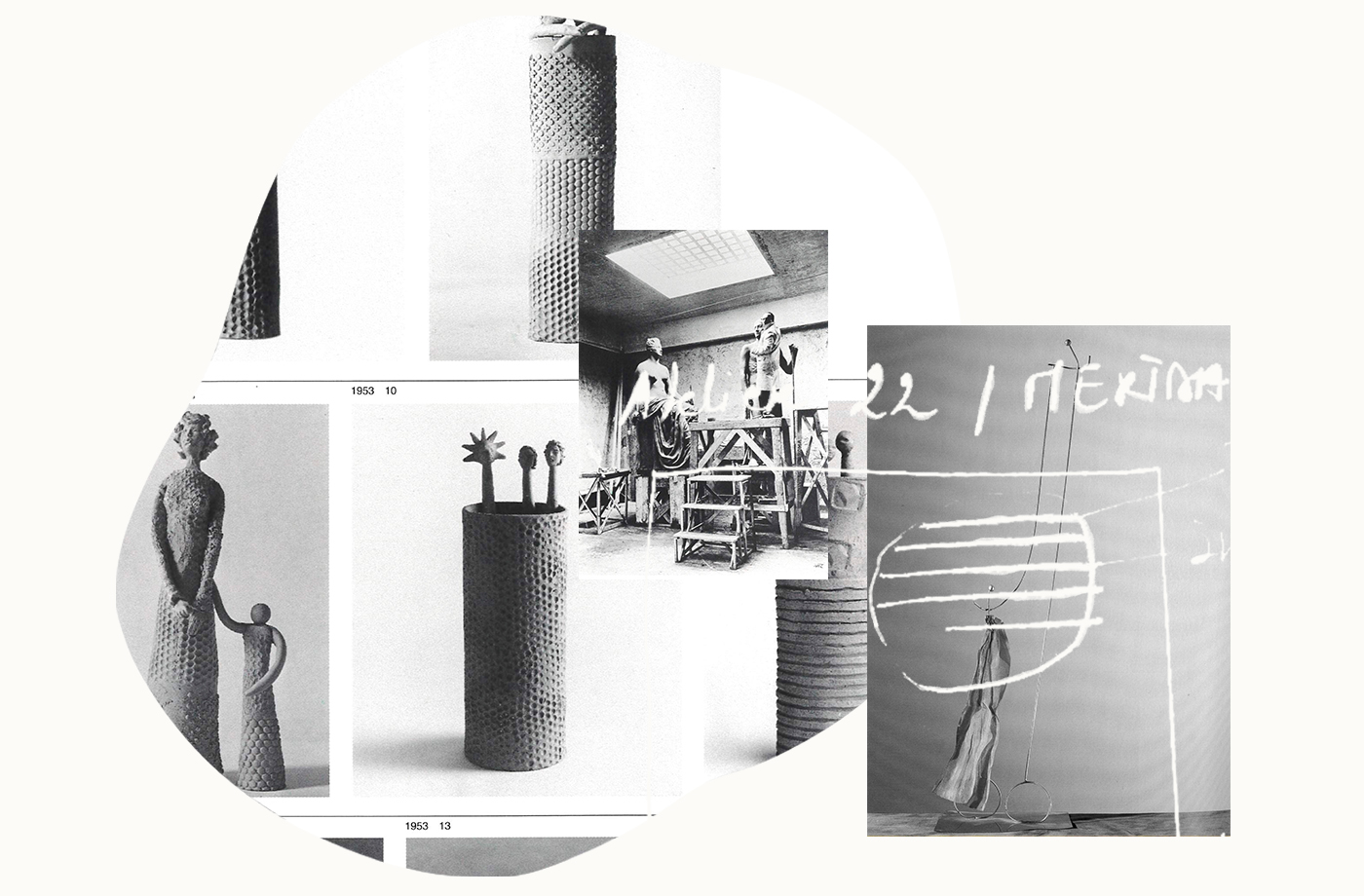The Artful Home: A Conversation with Liz Caan
“You could feel the rugs before you touched them… each one is a work of art but made to be walked on.”
— Liz Caan
Interior designer and long-time Merida client Liz Caan is a self-taught designer who founded Liz Caan & Co., a nationally recognized design firm based in suburban Boston. Her firm specializes in creative transformations, from ground-up renovations to room re-imaginings that traverse town and country. We spoke with her about a recent design collaboration with Merida, her “fearless-traditional” aesthetic, and creating design stories that foster conversation and togetherness.
You have such a distinctive aesthetic and a fearless approach to color and texture. Where does that come from?
I have an art degree but no formal training in interior design. I grew up in the Midwest in a brown and beige house, which probably explains why I gravitate towards color. I love brown, actually, and I like neutrals, but I didn’t find that inspiring. At a young age I realized that spaces can make you feel differently and after experimenting with my own spaces I learned a lot and realized that I could be fearless.
And that’s how we describe our aesthetic as a firm, ‘fearless traditional,’ because we gravitate toward traditional things, which I really love and respect, and like to reinterpret them a little.
How do you approach a new project? What’s the starting point?
I start with the feeling of the house, and color supports the mood, as well as texture and pattern and all of those things.
When we meet with a client we write the story for the home, and we try to explain the story behind the elements we choose. I want them to understand why I think a piece of furniture or a rug is perfect for the space and the role it plays in the project. It’s a recipe, there are proportions, something balances another thing out. But the stories behind things are important, and clients care a lot about their homes and want to understand what’s in their homes and why. It might be a brand and what it stands for, how it aligns with their value system.
You recently did an installation using Merida rugs from the Atelier Collection. What was your impression?
We installed three Atelier rugs which are monochromatic, all in the same colorway. I had seen the samples and knew they were going to be beautiful, but when I saw the rugs laid out I thought, my gosh, these are incredible. You could feel them before you touched them.
I didn’t fully appreciate the beauty of these rugs until we laid them out. And it wasn’t just me. Every single person who came through the space had the same reaction. The rugs were the first thing they commented on. The designs are subtle but they catch your attention.
You’ve been a Merida client for some time and have installed Merida rugs in many projects. What’s different about these rugs?
It’s the equivalent of a couture sweater. There’s a level of detail and the more you look at them you notice the way the yarns interact and how they’ve been constructed. It’s so subtle and while they’re quiet they have a big presence in the room, like that guest at the dinner table you want to sit next to.
They are so artful, you could hang them on a wall. I consider each one of these rugs as a work of art, but they’re made to be walked on. They’re unbelievably beautiful but they’re not precious.
I love watching Merida’s evolution as a company and have always loved their values, which are so important. They believe in good things, there’s a value system that I identify with and support, and I try to share that with my clients.
What role does art play in your practice as a designer?
I would say art plays a supporting role in our projects. We approach art at more of a personal level versus that of a collector. Art that’s accessible. Not just something that hangs on a wall, but artful creations, whether it’s a rug or a table or a fabric. A lot of the fabrics we work with are hand-blocked, small-batch, made by an artisan who loves what they do, creating original designs that are inspired by art and culture or travel.
I love putting things in projects that have these qualities. They’re handmade, designed by gifted people who care deeply about what they’re doing. People who do what they do for wonderful reasons. When you can feel the spirit of the maker and it becomes a presence in the room.
What would be your dream project?
I would love to do a space that’s a little more public. Like taking a public library and making it really beautiful and inspiring, less institutional. Or a small bed and breakfast, creating a holistic vision for people to enjoy, with a lot of layers, curated in a way that’s approachable, friendly, and a little unexpected.
This sounds weird but I have always wanted to create a laundromat that’s really beautiful, with great snacks, music… an amazing space that would make something people see as a chore into something cheerful. Something social and fun that creates community for people.
If anyone can pull that off it’s you! As we’re coming out of a period of isolation, are you seeing a change in what your clients are looking for, how they’re using their spaces?
Everything feels a little different now, like ‘what’s your new normal?’ For one, people appreciate being home more. For years we were all running around so much without realizing it, and then everything just stopped. We’re more thoughtful about our homes now and how we are using them.
What values are most important to you in the projects your designing now?
Living life well is what we want to stress to clients, appreciating things that are well made, living in a less disposable way and creating a warmer atmosphere. There are little things we try to work into our design to foster a sense of togetherness. Even something as simple as lit candles on the dinner table make everyone more conversational, the kids contribute more, you linger a little bit longer.
For a closer look at the Atelier rugs above, explore the Atelier 2021 Collection and request samples—or visit our gallery at the New York Design Center, Suite 500, where they are currently on display.
